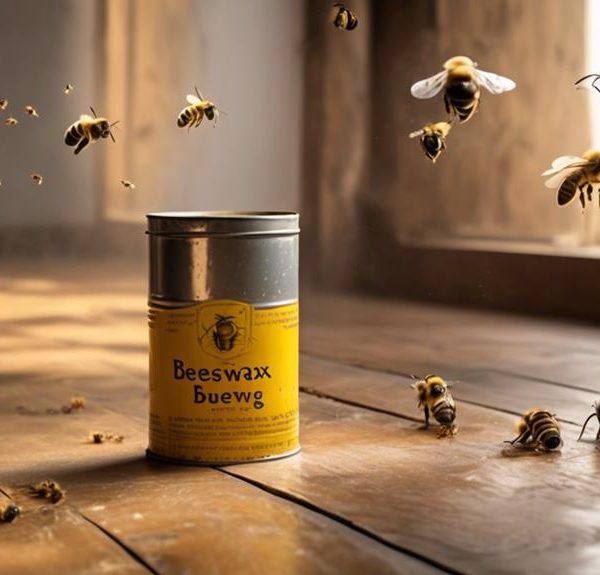Overcome your curiosity about the ability of beeswax wraps to withstand freezing conditions; dive in for an enlightening eco-friendly revelation!
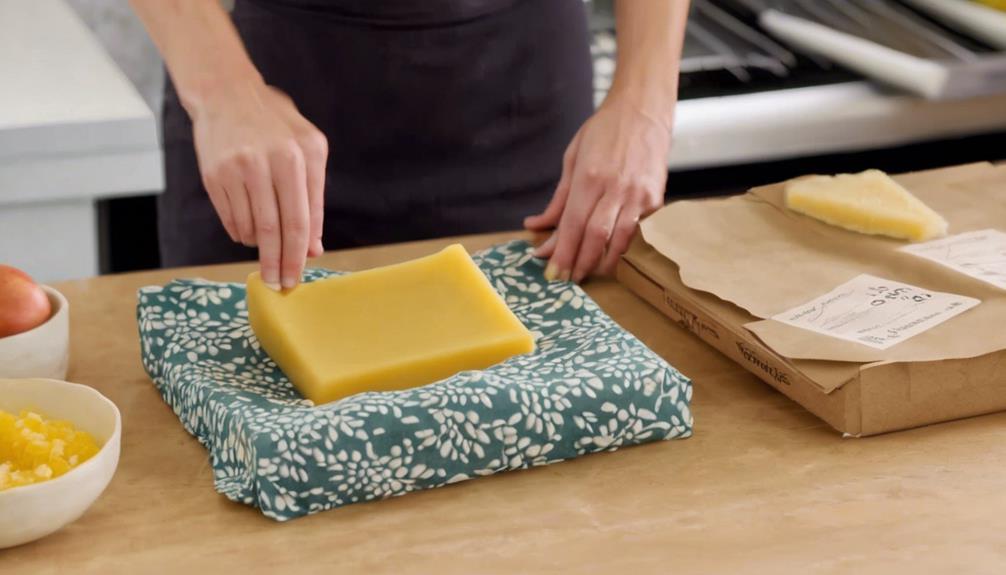
Can Beeswax Wraps Be Frozen?
As the old saying goes, 'Necessity is the mother of invention,' and beeswax wraps are a testament to that.
You've probably turned to these sustainable, eco-friendly alternatives to plastic for food storage, but you might be wondering if they can withstand freezing temperatures.
While it's true that beeswax wraps are versatile, their reaction to extreme cold is a different kettle of fish altogether.
Let's explore this further, shall we?
Key Takeaways
- Beeswax wraps can be frozen, but they become more brittle and may crack or break if not wrapped tightly.
- Repeated freezing and thawing cycles can degrade the beeswax coating, reducing the wraps' lifespan.
- Allowing the wraps to come to room temperature before unfolding reduces the risk of cracking or breaking.
- Proper handling, storage, and careful cleaning can help minimize damage when freezing beeswax wraps.
Understanding Beeswax Wraps
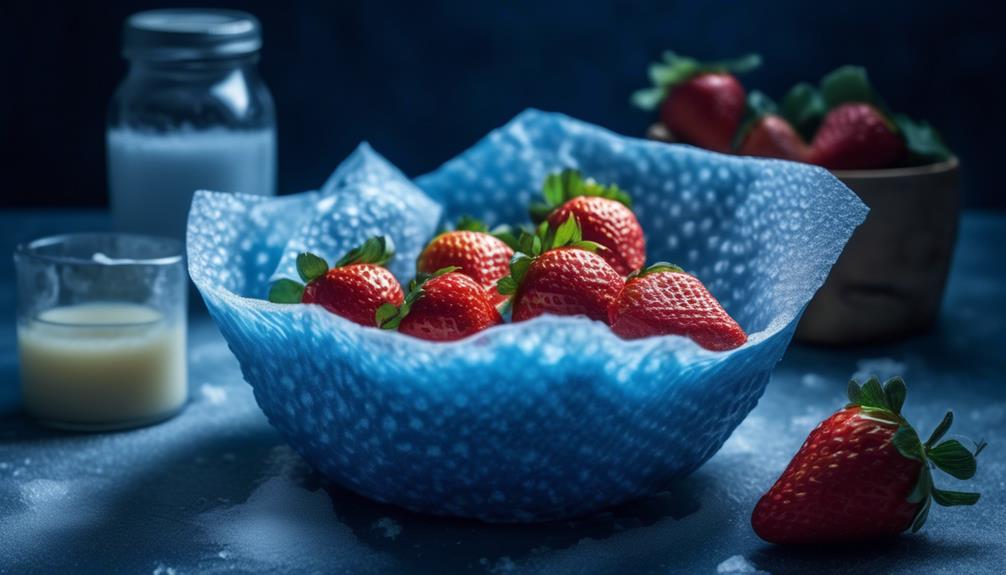
To fully grasp the concept of beeswax wraps, you need to delve into their composition, usage, and benefits. They're made by infusing a blend of beeswax, jojoba oil, and tree resin into a piece of 100% cotton cloth. The result? A flexible, reusable, and sustainable alternative to plastic wrap.
You might be wondering, how do you use these wraps? It's simple. You use the warmth of your hands to mold the wrap around a piece of food or over a dish. Once it cools, it holds its shape, creating a seal that keeps your food fresh.
Let's not forget the significant benefits these wraps offer. Firstly, they're eco-friendly, reducing your reliance on single-use plastics. They're also easy to clean, just rinse with cold water and mild soap, and you're good to go. Plus, they're biodegradable, so when they've lived their life (up to a year if you take good care of them), you can compost them.
The Science Behind Freezing
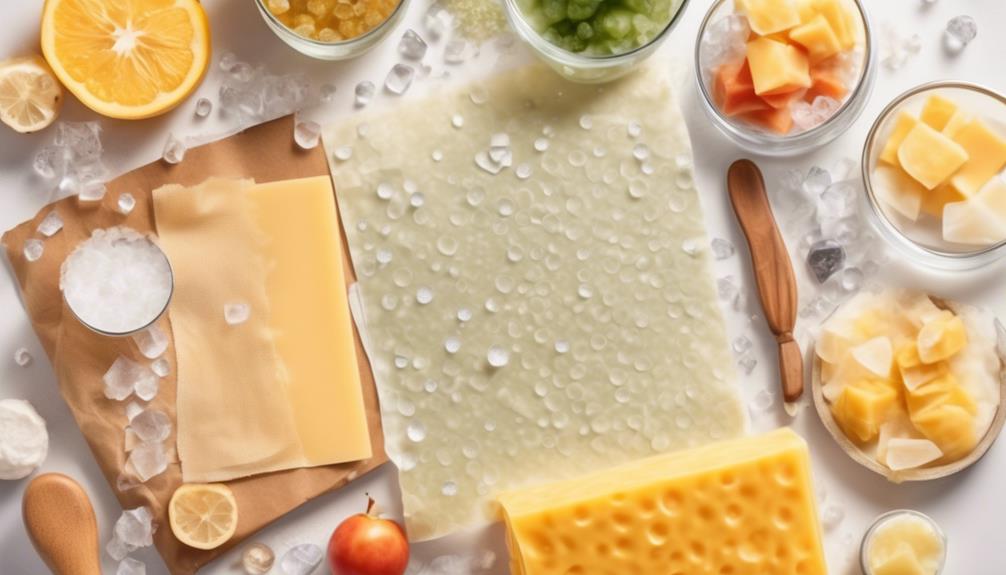
Before you toss your beeswax wraps in the freezer, it's crucial to understand the science behind freezing and how it impacts these eco-friendly alternatives to plastic wrap. When substances freeze, their molecules slow down and arrange themselves into a structured pattern, minimizing movement. This process results in a solid state with a fixed volume and shape.
In the case of beeswax, it's composed primarily of hydrocarbons that have a low freezing point. Once frozen, the beeswax becomes brittle and could potentially crack or break. However, thanks to the addition of other ingredients like jojoba oil and tree resin in most beeswax wraps, they maintain a certain level of flexibility even in lower temperatures.
It's also important to consider the effect of freezing on the antibacterial properties of beeswax wraps. Cold temperatures can potentially enhance the wax's ability to resist bacteria, further prolonging the lifespan of your food. However, repeated freezing and thawing cycles might degrade these properties over time.
Freezing Beeswax Wraps: Yes or No?
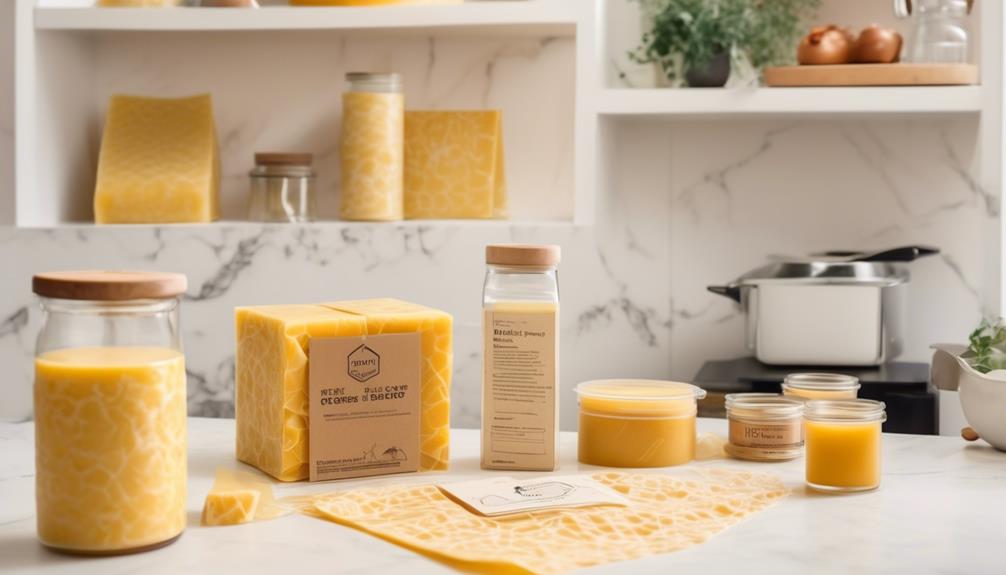
Given the science behind freezing and its impact on beeswax wraps, you might be wondering whether it's a good idea to freeze these eco-friendly food storage solutions or not. The answer is yes, you can freeze beeswax wraps, but there are a few important considerations to keep in mind.
Firstly, the beeswax and resin coating on these wraps become more brittle in freezing conditions. This means if you're not careful, the wraps could crack or break. You should ensure they're wrapped tightly around your food or container, without any loose flaps that might become damaged.
Secondly, research shows that repeated freezing and thawing cycles can lead to a degradation of the beeswax coating over time. If you plan to use your wraps in the freezer often, you may notice they don't last as long.
Lastly, it's best to allow the wraps to come to room temperature before unfolding them. This will reduce the risk of cracking or breaking.
Proper Care for Beeswax Wraps
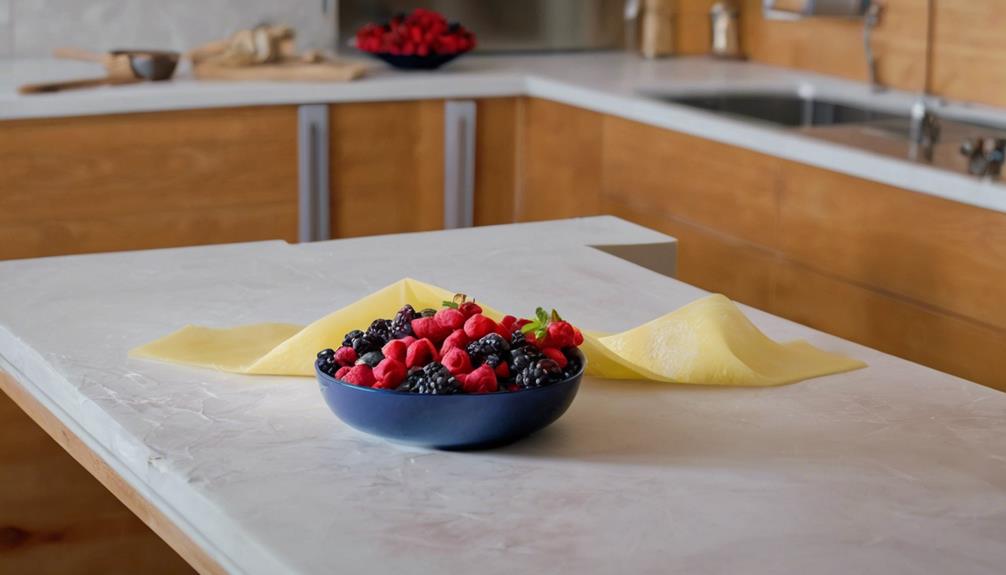
In caring for your beeswax wraps, it's crucial to understand that proper maintenance can significantly extend their lifespan and effectiveness. They're not as complicated to care for as you might imagine, but there are a few key points you should note.
First of all, treat them gently. Avoid using hot water, as it can melt the wax coating and ruin the wrap. Instead, clean with cold water and mild soap.
Secondly, don't subject them to heat sources such as the microwave, dishwasher, or hot car interiors. The heat can cause the wax to melt or warp, reducing the wrap's effectiveness.
Air-dry your wraps after cleaning. Don't wring them out or use a dryer. Just gently shake off excess water and hang or lay them flat to dry.
You can refresh your wraps every few months by placing them in a low-temperature oven for a few minutes. This helps redistribute the wax and extends their functionality.
Finally, remember that beeswax wraps aren't suitable for all food types. Stay away from raw meats and fish, as these can lead to bacterial growth.
Proper care and attention will ensure your beeswax wraps remain effective and environmentally friendly for a long time.
Alternatives to Freezing Beeswax Wraps
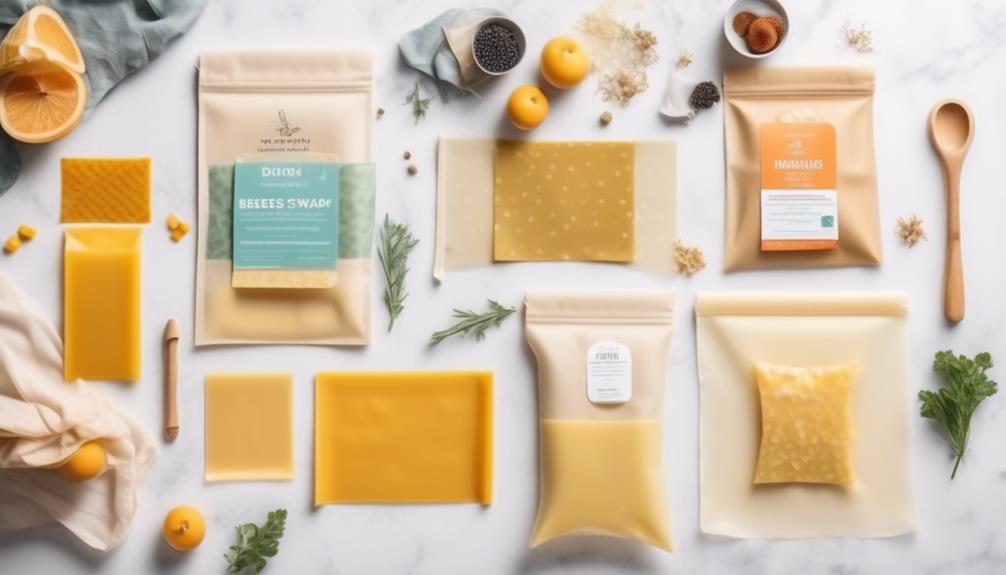
Considering you might have concerns about freezing your beeswax wraps, it's important to explore viable alternatives that can maintain food freshness without compromising the wraps' integrity.
One option is refrigeration. Beeswax wraps can be safely stored in the fridge, where the cooler temperature helps to extend food life while the wrap remains pliable and efficient. When using the fridge, ensure your food is tightly wrapped, sealing it off from air exposure and potential odors.
Another alternative is using airtight containers. These containers prevent air from reaching the food, thus slowing down the oxidation process and keeping your food fresher for longer. They're reusable, easy to clean, and can accommodate a wide variety of food items.
Lastly, consider using silicone stretch lids. These eco-friendly lids are versatile and can be stretched over bowls, pots, and partially used produce, creating a tight seal that locks in freshness. They're also microwave-safe and dishwasher-friendly, offering convenience and reducing waste.
It's crucial to think about these alternatives as part of a broader strategy for sustainable food storage. Remember, beeswax wraps are but one tool in your arsenal. By combining different methods, you can effectively keep your food fresh without having to freeze your wraps.
Frequently Asked Questions
Can Beeswax Wraps Be Used in the Microwave?
Yes, you can use beeswax wraps in a microwave, but it's not recommended. The heat from the microwave can melt the wax coating, damaging the wrap and potentially leaving a waxy residue in your microwave.
It's best to use beeswax wraps for covering dishes at room temperature or in the fridge. They're not designed for high-temperature use, such as microwaving or oven baking.
How Often Do Beeswax Wraps Need to Be Replaced?
You'll need to replace your beeswax wraps depending on how often you use them. Typically, with proper care, they can last up to a year. However, if you're noticing cracks or thin spots, you might need to replace them sooner.
Remember to wash them in cold water with mild soap, and let them air dry. Don't use them with raw meat or fish.
Ultimately, the longevity of your wraps depends on how well you care for them.
Is There a Vegan Alternative to Beeswax Wraps?
Yes, there's a vegan alternative to beeswax wraps. You might want to consider wraps made from plant-based waxes like soy, candelilla, or carnauba. They're an eco-friendly option that's just as effective as beeswax wraps in keeping your food fresh.
Plus, they're easy to clean and reusable. So, for vegans or anyone looking for a plant-based alternative, these wraps are a great choice.
Are There Any Foods That Should Not Be Stored in Beeswax Wraps?
Yes, there are foods you shouldn't store in beeswax wraps. Raw meat, fish, and poultry should be avoided due to potential bacterial growth. Hot food or liquids can also melt the wax. It's best to let food cool down before covering it.
Similarly, don't use them in the microwave as the heat will melt the wax. So, while beeswax wraps are great for many things, they're not suitable for every food storage need.
Can Beeswax Wraps Be Composted After Their Lifespan Is Over?
Yes, you can compost beeswax wraps after their lifespan is over. They're made from natural materials, so they'll break down in a backyard compost heap over time. It's an eco-friendly way to dispose of them.
But remember, they don't break down as quickly as fruit and veggie scraps. They might take a few months or even a year. So, don't expect them to disappear overnight. It's a slow process, but it works!
Conclusion
In conclusion, while freezing beeswax wraps isn't recommended due to potential damage, it's not entirely off the table. However, with the right care and handling, these wraps can have a long lifespan.
If freezing is necessary, consider alternatives such as parchment paper or silicone lids.
Remember, understanding how your beeswax wraps react to different conditions will help you make the most out of this sustainable, eco-friendly food storage option.

